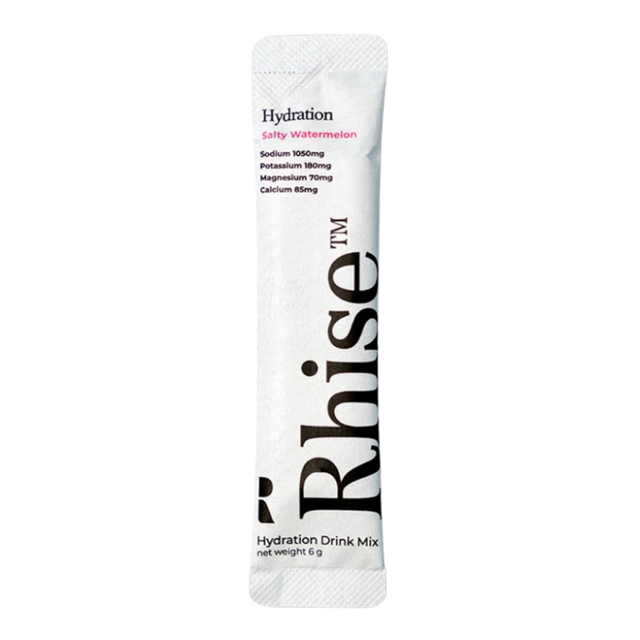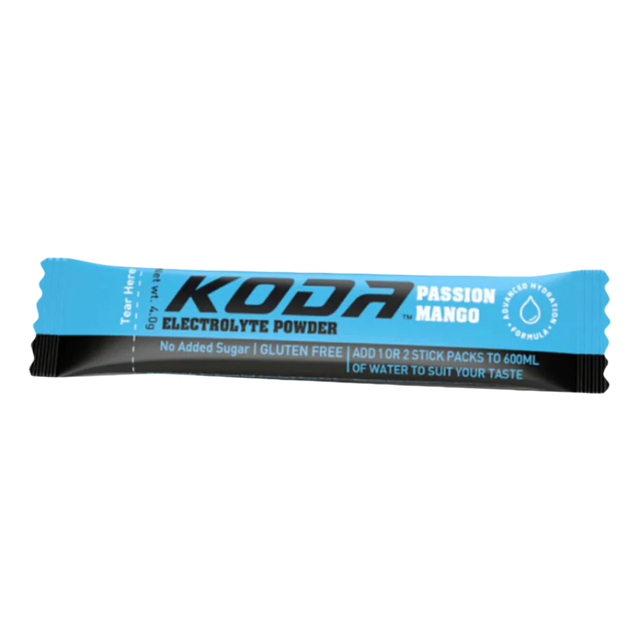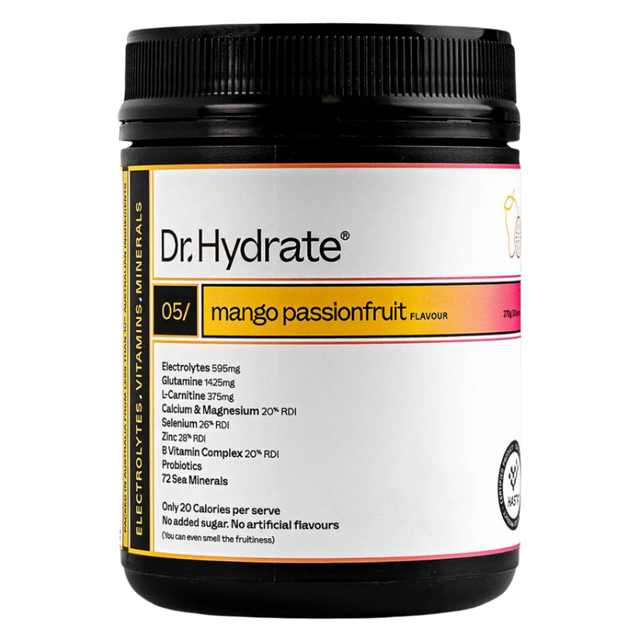No Added Sugar Hydration Drinks: Benefits, Electrolytes & Athlete Guide
Sweat, exercise, and hot weather all demand smart hydration. No added sugar hydration drinks give you the electrolytes you need while helping reduce sugar intake. We break down their benefits, how they compare to traditional sports drinks and practical tips for picking the best option for your workouts and daily routine.
Table of Contents
-
What Exactly Are No Added Sugar Hydration Drinks?
-
Why Do Athletes Choose No Added Sugar Options?
-
No Added Sugar vs. Traditional Sports Drink Mixes: What’s the Difference?
-
Which Electrolytes Are Found in No Added Sugar Hydration Drinks?
-
How Do Athletes Use No Added Sugar Hydration Drinks in Training and Racing?
-
Are There Any Downsides to No Added Sugar Hydration Drinks?
-
How to Pick the Best No Added Sugar Hydration Drink for You
What Exactly Are No Added Sugar Hydration Drinks?
No added sugar hydration drinks are beverages that provide key electrolytes, such as sodium, potassium, magnesium, and calcium, with little or no carbohydrate. They can come in a powdered, liquid or tablet form.
Why Do Athletes Choose No Added Sugar Options?
No added sugar hydration drinks are a popular option for those wanting hydration and electrolytes without extra carbohydrates. Reasons for choosing no added sugar hydration mixes may be;
→ Weight management
→ Those living with diabetes
→ Those choosing to follow a keto or low-carb diet
→ Health benefits of reduced simple sugars
No Added Sugar vs. Traditional Sports Drink Mixes: What’s The Difference?
While sports hydration mixes provide carbohydrates for energy and electrolytes for fluid balance, no added sugar versions supply only electrolytes, supporting hydration without added calories. Ideal for exercise at intensity under an hour or for those managing sugar intake (1,2).
→ Sports Hydration Drink Mixes = Carbs + Electrolytes ( Hydration + Energy)
→ No Added Sugar Hydration Drink Mixes = Electrolytes Only ( Hydration )
Which Electrolytes Are Found In No Added Sugar Hydration Drinks?
All added sugar electrolyte drinks typically provide sodium and most also include potassium, magnesium, and chloride. Calcium is another mineral frequently added to support overall electrolyte balance.
How Do Athletes Use No Added Sugar Hydration Drinks In Training and Racing?
Mix one serving with 350-500 mL of water. Drink one serving daily on days with intense exercise, high sweat loss, or in hot/humid conditions. For sessions under an hour, sip gradually to stay hydrated (2).
These drinks can also be paired with energy gels, chews, waffles or other carbohydrate sources to support training and racing over an hour.
Are There Any Downsides To No Added Sugar Hydration Drinks?
Yes, there are some drawbacks to consuming no added sugar electrolytes. These being;
-
A small amount of carbohydrates are needed for optimal fluid absorption from the small intestines into the bloodstream (3).
-
They don’t provide energy for endurance events.
-
Some contain artificial sweeteners which may affect those who have a sensitive gut or need to avoid FODMAP food groups (4,5).
How To Pick The Best No Added Sugar Hydration Drink For You
To decipher which no sugar hydration mix is best for you, there are a few key differences to consider. There include;
-
Sodium content ranges from 210-1000mg per serve. Choose one that best suits your sweat needs.
-
Added vitamins and minerals
-
Taste and ease of mixing (powder vs tablet)
-
Sweetener preference (stevia, sucralose, none)
-
If you want a product that is batch tested by Informed Sports or HASTA for the safe use in sport
The table below lists all the no added sugar hydration drinks offered by Aid Station, along with their key variations to make choosing easier.
|
No Added Sugar Hydration Drink Mix |
Sodium Per Serve |
Added Vitamins |
Powder/ Tablet/ Fluid |
Batch Tested |
|
500mg |
Powder |
|||
|
500mg |
Fluid |
|||
|
480mg |
Powder |
✅ |
||
|
1000mg |
Powder |
|||
|
350mg |
✅ |
Powder |
✅ |
|
|
430mg |
Powder |
✅ |
||
|
210mg |
✅ |
Powder |
✅ |
|
|
500mg |
Powder |
✅ |
||
|
250mg |
✅ |
Tablet |
||
|
300mg |
✅ |
Powder |
||
|
1000mg |
Powder |
✅ |
||
|
400mg |
Powder |
|||
|
384mg |
Powder |
|||
|
500mg |
Tablet |
|||
|
1050mg |
Powder |
Ash Miller
Dietitian and Nutritionist (Masters)
Bachelor of Physical and Health Education
Instagram: @ashthomo_nutrition
References
1. Food Standards Australia New Zealand. Australia New Zealand Food Standards Code – Standard 2.6.2: Non-alcoholic beverages and brewed soft drinks. Canberra (ACT): FSANZ; 2015 [updated 2023; cited 2025 Aug 20]. Available from: https://www.legislation.gov.au/F2015L00465/latest/text
2. Jagim, A. R., Harty, P. S., Tinsley, G. M., Kerksick, C. M., Gonzalez, A. M., Kreider, R. B., … Antonio, J. (2023). International society of sports nutrition position stand: energy drinks and energy shots. Journal of the International Society of Sports Nutrition, 20(1). https://doi.org/10.1080/15502783.2023.2171314
3. Jeukendrup, A.E., Currell, K., Clarke, J. et al. Effect of beverage glucose and sodium content on fluid delivery. Nutr Metab (Lond) 6, 9 (2009). https://doi.org/10.1186/1743-7075-6-9
4. Hetta, H.F.; Sirag, N.; Elfadil, H.; Salama, A.; Aljadrawi, S.F.; Alfaifi, A.J.; Alwabisi, A.N.; AbuAlhasan, B.M.; Alanazi, L.S.; Aljohani, Y.A.; et al. Artificial Sweeteners: A Double-Edged Sword for Gut Microbiome. Diseases 2025, 13, 115. https://doi.org/10.3390/diseases13040115
5. Monash University. Low FODMAP Diet App. Monash FODMAP, n.d., https://www.monashfodmap.com/ibs-central/i-have-ibs/get-the-app/. Accessed 20 Aug. 2025.
Disclaimer:
The content in this blog is for general information only and is not a substitute for professional medical advice, diagnosis, or treatment. Always speak with your doctor or allied health team before changing your diet, exercise, or taking supplements, especially if you have a health condition or take medication. Please use this information as a guide only. Aid Station doesn't take responsibility for individual outcomes.


















